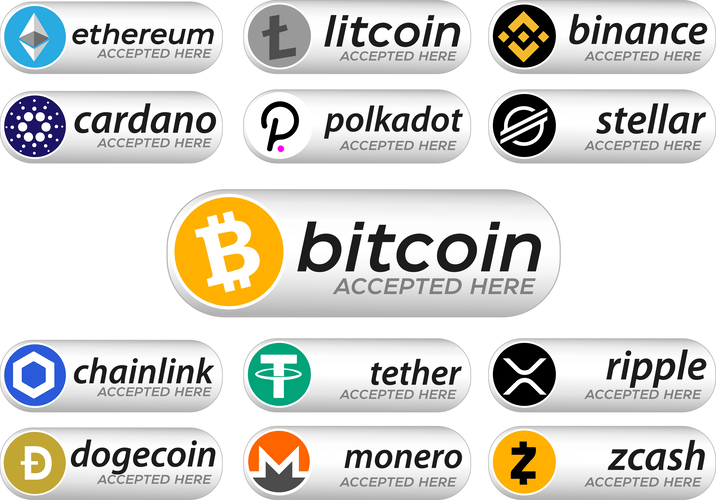OPINION: How Web3 is Revolutionizing the Aviation Industry Through Decentralization Avionics International
For example, if a contract says that ownership of an item transfers to whoever pays for it, you simply send the asking price to that contract. The ledger then automatically updates by using a transaction in the next block to reflect you as the new owner. Each token may represent a specific fraction or whole unit of the underlying asset, making it divisible and easily tradable. There are different token types in the virtual world, such as security tokens subject to securities regulations or non-fungible tokens (NFTs) representing unique, indivisible assets that don’t allow fractal ownership.

As a result, you can use it to create an unalterable or immutable ledger for tracking all types of transactions. When the internet just started, read-only web experiences were common. End users could only read content that was published by companies who purchased and maintained the infrastructure that hosted the static webpages. Web 3.0 aims to move more fully towards semantic web technologies currently found in some aspects of existing web technologies. For example, a search engine provides more accurate and contextually relevant search results, and intelligent agents assist users in performing tasks more efficiently. Web3 introduces new paradigms that require learning different mental models than the ones used in Web2.0.
Web 3.0: Read-Write-Own
There’s no way to erase anything, whether it’s a regrettable post or revenge porn. Immutability also could spell major problems for Web3 in some places, such as Europe, where the General Data Protection Regulation (GDPR) enshrines the right to have personal data erased. Amidst all the demands on our attention, many of us didn’t notice cryptocurrencies slowly seeping into the mainstream. What was first a curiosity and then a speculative niche has become big business. This is a hard one to nail down, and depends entirely on what your definition of the still-nebulous concept of Web3 looks like.

The cause of the optimism is the development of blockchain technology and cryptocurrencies. Bitcoin, Ethereum and other digital forms of money are the most concrete examples that exist of an all-online, no-one-in-charge, blockchain-based system. As web3 gains traction, digital wallets are becoming the standard, facilitating seamless value exchange across all digital channels. This translates into a frictionless experience for both passengers and businesses operating within the aviation sector.
A new paradigm for the Internet
Nodes cooperate to store, retrieve, and distribute content across the web, eliminating the need for centralized servers. You can use a smart contract to program conditions for financial instruments such as mortgages, bonds, and securities web 3.0 development (also called decentralized finance). Or you might facilitate tracking and payment of goods through a supply chain. Smart contracts can eliminate the need for intermediaries, which helps make transactions more efficient and secure.
For Ed Chang, head of gaming at Ava Labs, the web3 industry is still arguably young, but he’s hopeful that there’s space for web3 elements to be complementary to the gaming experience and add value. “We believe that all games can leverage blockchain elements, whether it’s truly owning https://www.globalcloudteam.com/ your items, earning rewards for playing, or building payment rails for microtransactions, creators and modders,” he said. As we transition from Web2 to Web3, we can expect XMTP and other decentralized internet protocols to gain larger adoption from developers across the globe.
Zipline Gets FAA Approval for BVLOS Drone Deliveries
For example, centralized freelancer platforms connect freelancers with customers, and room-share platforms connect property owners with renters. Both service providers and service users create data like service profiles, service descriptions, user profiles, blogs, videos, and comments. On paper, that would give a lot more people access to the internet than before, and AI would be employed to curtail bots and click-farm websites.

The more crypto you stake, the greater chance you have to update the blockchain and earn more currency as a reward. This means that the validators with the most money keep getting richer. “The internet has been thriving for a long time, but the web has actually been dying,” Neuroth says. He says that content on centralized platforms is siloed from each other, which stifles the web. “[Centralized platforms] use the internet, but they’re not the web. The web is the open ecosystem.” By collecting information on user likes, dislikes and attention, advertisers can get their marketing material in front of the demographic most likely to consume their products or services.
What is web3? It’s Silicon Valley’s latest identity crisis
We use vendors that may also process your information to help provide our services. This site is protected by reCAPTCHA Enterprise and the Google Privacy Policy and Terms of Service apply. The new company, which is capitalized by seed investors based in London, Singapore and Hong Kong, is itself based in Dubai and Hong Kong with a headcount of five people. Asia looks to be leading the charge in web3 gaming investment.
For example, services that run on the Ethereum blockchain may require ether-based digital tokens. Inequity issues also arise with proof of stake (PoS), web3’s validation method. Chandler Song, the chief executive officer of Ankr, says that most of the web3 platforms currently being built are based on proof of stake, a consensus mechanism that validates updates to the blockchain. It is far more energy-efficient than proof of work, the dominant consensus mechanism that utilizes ASIC mining.
Semantic web technologies
Semantic web technologies allow applications to better understand and interpret customer data. They use linked data principles to interlink multiple datasets or publish structured data on the web. As a result, it currently depends mainly on centralized infrastructure (GitHub, Twitter, Discord, etc.). Many Web3 companies are rushing to fill these gaps, but building high-quality, reliable infrastructure takes time. The technical barrier to entry to using Web3 is currently too high.
- That’s why the NFT you bought probably isn’t actually on a blockchain.
- Web2 companies like Facebook and Google offer ostensibly free services, but there is a hidden cost to privacy as they exploit user data.
- If you purchase an in-game item, it is tied directly to your account.
- All they’d need to do is contrast those original promises of positive connectivity and collaborative progress with the dystopian realities many of us are now facing.
- Learners are advised to conduct additional research to ensure that courses and other credentials pursued meet their personal, professional, and financial goals.
- The details make the difference as to whether it’s basically just Web 2.0 in disguise or whether it is actually legitimately open, transparent, decentralized, peer-to-peer.
Blockchain is a relatively new method of storing data online, which is built around the two core concepts of encryption and distributed computing. Today, all of the infrastructure that the popular sites and hangouts we spend time on online are usually owned by corporations and, to some extent, controlled by regulations set out by governments. This version of the internet featured static web pages coded in HTML.
What are the main technologies in Web 3.0?
As with any emerging technology, Web3 implementation faces several challenges that must be addressed for widespread adoption and success. Smart contracts are self-implementing contracts with predefined rules written in code. They automatically enforce the terms of the agreement when certain conditions are met.